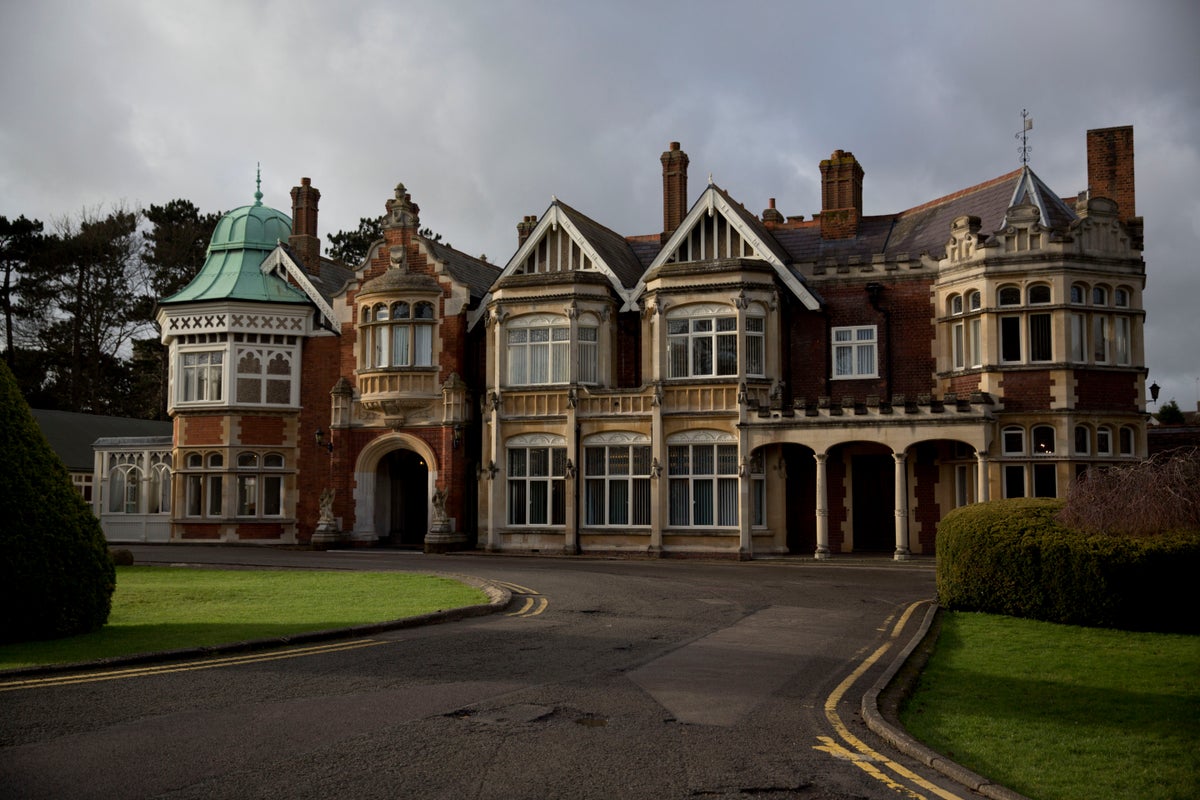
The United Kingdom is hosting the AI Safety Summit, bringing politicians, computer scientists and tech executives to a site chosen for its symbolism: Bletchley Park, synonymous with codebreaking and the birth of computing.
During World War II, a group of mathematicians, cryptographers, crossword puzzlers, chess masters and other experts gathered at the Victorian country house 45 miles (72 kilometers) northwest of London to wage a secret war against Nazi Germany. Their goal: cracking Adolf Hitler’s supposedly unbreakable codes.
Bletchley Park’s most famous feat was outwitting Germany’s Enigma encryption machine, which produced a constantly changing cipher and was widely considered unbreakable. To crack it, mathematician Alan Turing — building on work done by Polish codebreakers — developed the “Turing bombe,” a forerunner of modern computers.
Deciphered Enigma messages revealed details of the movements of Germany’s U-boat fleets and provided crucial information for the North African desert campaign and the Allied invasion of France. Some historians say cracking the code helped shorten the war by up to two years.
Historian Chris Smith, author of “The Hidden History of Bletchley Park,” said it is impossible to prove the extent to which the work at Bletchley Park shortened the war, but it undoubtedly sped up the development of computing.
Bletchley Park's wartime scientists developed Colossus, the first programmable digital computer, to crack the Lorenz cipher that Hitler used to communicate with his generals.
“They built, effectively, one of the early generations of computers from basically nothing,” Smith said, exhibiting a “technological optimism” that's a striking feature of wartime Bletchley Park.
No wonder current Prime Minister Rishi Sunak’s government finds it inspiring.
Smith, a lecturer in history at Coventry University, said a mythology has developed around Bletchley Park, as a playground for Turing and other eccentric scientists, that oversimplifies its true contribution.
“It fits into this idea that a group of boffins with a bit of wool and some yards of wire and some bits and bobs can win the war,” he said.
In fact, almost 10,000 people worked at Bletchley Park during the war, three-quarters of them women, overflowing from the mansion into newly built brick and concrete blocks and smaller wooden structures known as huts.
“The way to imagine Bletchley Park is a massive civil service bureaucracy,” Smith said. “It’s basically a factory. … Twenty-four hours a day, seven days a week. It’s always going.”
When peace came, the codebreakers returned to civilian life, sworn to secrecy about their wartime work. It was not until the 1970s that the work at Bletchley Park became widely known in Britain.
The site opened as a museum in 1994, after local historians banded together to prevent it from being bulldozed to build a supermarket. It was restored to its 1940s appearance, complete with manual typewriters, rotary phones and enamel mugs — including one chained to a radiator in Hut 8, where Turing led the Enigma team.
After the war, Turing continued to work on computing and developed the “Turing test” to measure when artificial intelligence becomes indistinguishable from a human — a test some say modern-day AI has already passed.
In 1952 he was convicted of “gross indecency” over his relationship with another man, stripped of his security clearance and forced to take estrogen to neutralize his sex drive. He died at 41 in 1954 after eating an apple laced with cyanide.
Turing received a posthumous apology from the British government in 2009 and a royal pardon in 2013. The 2014 film “The Imitation Game,” starring Benedict Cumberbatch as Turing, cemented his national hero status.
Turing is commemorated by statues and plaques across the U.K. One of the most prestigious honors in computing, the $1 million Turing Prize, is named after him. His face even adorns the Bank of England’s 50-pound note.







